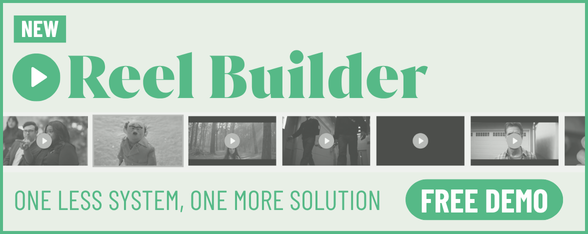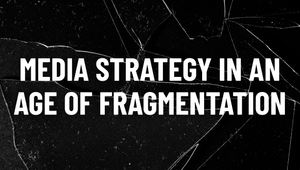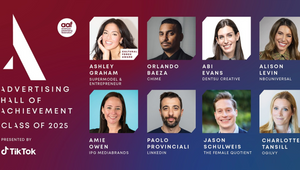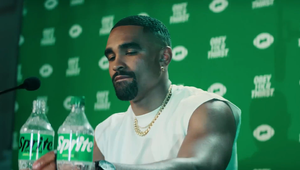
Ogilvy NA Is Bringing Creative and Production Closer with Empathy and Joy

When Ogilvy North America promoted Tim LeGallo to chief production officer earlier this year, it wasn’t just a title change - it marked the start of a tighter, more empathetic partnership between creative and production. Working alongside chief creative officer Rafael Rizuto, the duo is working closely to reshape how each discipline collaborates across the region.
“We've operated a little bit in different silos,” Tim tells LBB. “Not for any fault beyond that’s just the way the work has come in, and no one's ever looked at it in this holistic, 360-degree way.
“But I'm trying to bring everything together. I want the teams in New York, Chicago, Toronto and DC to collaborate. It opens up a lot of opportunities for everyone.”
Tim adds that he is pushing to create a production culture in general, noting Ogilvy’s new initiatives like ‘Behind the Lens’, inviting directors into offices to share their processes and work. Though it’s not all inward facing. “I'm trying to bring the production community into Ogilvy, and then spread Ogilvy out within the industry. I’m all about bringing people together and making connections.”

Above: Tim LeGallo, Ogilvy North America' s chief production officer
He continues, “We have a lot of wonderful relationships with external partners and, depending on the project and client, we spread our work around in a fair and supportive way… We are still just looking for the best creative partner who's going to bring the idea to life.”
This passion for craft is just one of the shared beliefs that makes Rafael and Tim’s partnership as CCO and CPO so strong.
"Good agencies are defined by the ideas they have, but great agencies are defined by the ideas they produce.”
“From the first minute I met Tim, I said ‘this guy gets it’. Good agencies are defined by the ideas they have, but great agencies are defined by the ideas they produce,” says Rafael. “There are great creatives everywhere but I think the agencies who have the ability to produce at the high levels are the ones succeeding. We are visual beings… it doesn't matter how good the idea is if you don't produce it well.”
What excites Rafael most about working with Tim is that they’re both empaths. “In an industry that's becoming tougher and rougher,” he says, “with burnouts and everything, we need to be about more than the outcome. It's about how we do the work, as well!” This forms their philosophy of ‘greatness with goodness’ – a caring attitude for the work and the talent behind it.
“At this level,” adds Rafael, “the skills are table stakes – you need to be good at what you do. Instead, it’s about the intangibles – how you make your team feel, how you curate the environment.”

Above: Rafael Rizuto, Ogilvy North America' s chief creative officer
There's nothing Tim gets more excited about than meeting with up-and-coming talent, or seeing someone from his team – lovingly referred to as his ‘tribe of misfits’ – thrive or conquer a challenge. Tim takes hiring very seriously and has assembled a group of producers in New York so synergistic and skilled in their own superpowers that Rafael refers to them as ‘The Avengers’.
But no matter how specialised Ogilvy’s producers are in one area, part of Tim’s approach to breaking down silos, beyond his deepening dynamic with Rafael, is to diversify duties. “Producing is producing,” he says. “Someone who can produce a big TV thing can also produce a $30,000 social campaign or a digital out-of-home campaign or an event. I want to grow everyone's skill set. There's so much to learn from each other. If you put people in situations they haven't been involved with before, it brings fresh thinking and a new creative look.”
"I don't want to ever force an execution on an idea because it's something new or innovative... Let the idea drive the execution – and the innovation, if necessary.”
“Of course, we need capabilities and expertise,” adds Rafael. “For example, we have the best social team in the world right now. See the work with CeraVe and Michael Cera or the Beyoncé work we did for Verizon. But at the end of the day, the idea should dictate how it’s expressed in the world.”
This agility in combining talent and selecting production methods in ways that serve the creative is another vital point of alignment for the duo. “We’re keeping up with all of this emerging technology, whether it's AI,VR, AR or virtual production,” says Tim. “But I don't want to ever force an execution on an idea because it's something new or innovative that we want to try. If an idea calls for a very simple production, I want to deliver that, because it’s what's going to make it special and interesting. Let the idea drive the execution – and the innovation, if necessary.”
While they acknowledge the industry is always chasing the ‘next shiny object’ – currently AI – they place more weight on the human side of creativity: talent’s ability to bring their authentic, distinct selves to work. “There is a quote I love from Sir John Hegarty,” says Rafael. “‘Some people in our industry go to bed and pray to the gods to make what we do a science’. But it’s about the people… Each one of us, our experiences, are so unique. That’s the richness.
"You can learn the craft, learn how to use AI or Photoshop. But it’s what you bring to work, your experiences and the person you are, that’s more important… Until the robots take over, and then we are fucked.”
Tim interjects, “We have a little more time!”
"I push my team to be as creative in our execution as the idea itself... Production is all creativity, when you really break it down. I look at it as an extension of the work they've already created.”
However, a lack of time is one of the major headwinds the pair is facing at Ogilvy today, being asked to deliver high quality work more frequently and faster than ever. “We had an ask a couple weeks ago – 11 days from conception to shipping a fully executed spot,” says Tim. “We built a set, shot it, edited it on set and got it out.” The reason that was possible, he explains, was because creative and production were in complete lockstep throughout. “We broke down any sort of silo we had. I had the account team, the client and everyone else involved in every aspect, and we did it as a partnership.”
Production is no longer an afterthought in their process, even including a producer at creative reviews to ensure viability and provide additional perspective. “I push my team to be as creative in our execution as the idea itself,” says Tim. “I love when Rafa shares something with me really early on, because it gets my brain going. I love that collaboration. Production is all creativity, when you really break it down. I look at it as an extension of the work they've already created.”
Conversely, Tim encourages creatives to think more like producers, too. “Some of the best creatives have given me a run for my money… I love when a creative has some really strong executional considerations for their idea.” Rafael laughs, “He doesn’t have to ask! Creatives are already very opinionated, we’ll share our opinions anyway.”
“Yeah, exactly!” Tim replies. “Sometimes I'm like, ‘just give me a minute!’. But no, I love cross-pollination between creative and production. It makes us elevate the craft.”
This collaboration also makes creatives ‘less protective and precious’ about what they do - a mentality that Rafael wants to see the end of. “Sometimes people even like to underestimate clients, but they live and breathe the brand – they know the brand more than you do! So if you create an environment that's very inclusive, ideas flow pain-free and the work ends up being better.”
He adds, “Pain is inevitable but suffering is optional. And there's a lot of unnecessary suffering in our industry. If you just learn to work better with each other, we can bypass some of that suffering.”
“You cannot lose touch... even to show that you’re good enough to judge someone’s idea. The business can’t afford the Queen of England-style of leadership. You need to be in it.”
According to Rafael, a large part of this pain comes from the general pressures of the business – the long hours, burnout and budget cuts. But as leaders, he says they have choices under their control to protect their talent. What's more, both Rafael and Tim are strong proponents of leading from the front, still attending shoots and edit sessions together to show they’re part of the process they still love.
“As a leader, you should be a practitioner,” says Rafael. “You cannot lose touch… even to show that you’re good enough to judge someone’s idea. The business can’t afford the Queen of England-style of leadership. You need to be in it.”
Taking this approach forward together, Tim shares that he has his sights set on creating growth opportunity programmes for junior talent. “But first and foremost is figuring out how we can elevate every piece to the top craft it can be – and I think we're getting close to being there.”
“That's our mission,” says Rafael. “To deliver and keep elevating the craft. But we also need to have fun. Sometimes we take what we do for granted. We shouldn't lose that perspective.”
“Having fun is really important for me as well,” adds Tim. “I get a lot of joy out of what we do, and I try to make that infectious for everyone else. If we're not enjoying this or having fun, we're doing it wrong somehow.
“There's a synergy that happens between creative, production, account and client, and you all know when something has been done right. There’s an energy and a lightness and a joy… Bringing all of those elements together, it's a feeling – you just know when it worked – and there's no better feeling.”















